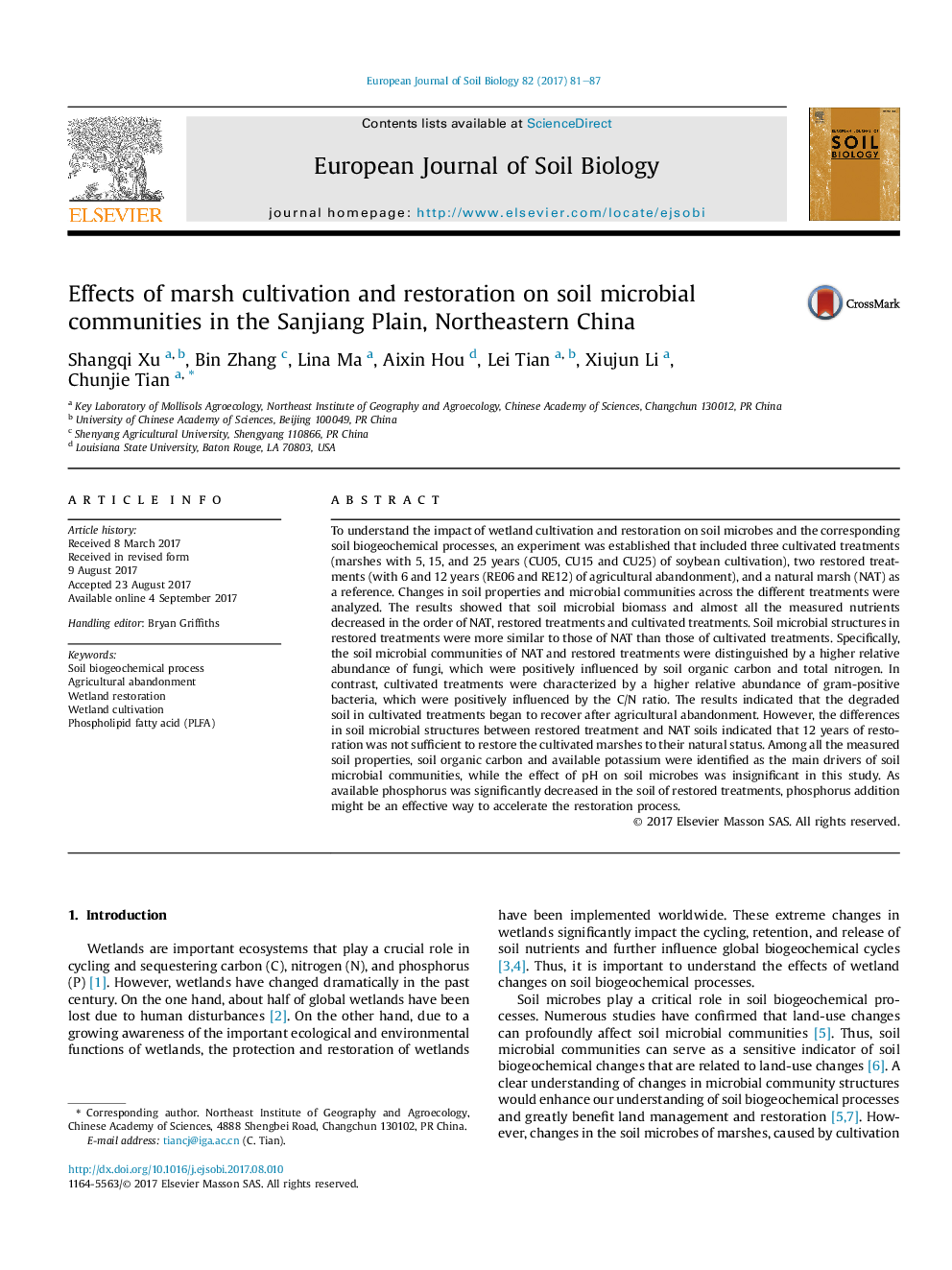| کد مقاله | کد نشریه | سال انتشار | مقاله انگلیسی | نسخه تمام متن |
|---|---|---|---|---|
| 5744204 | 1618110 | 2017 | 7 صفحه PDF | دانلود رایگان |
- Changes in soil microbes over a time period after marsh change were studied.
- Soil degraded after marsh cultivation and recovered after agricultural abandonment.
- Soil of natural and restored marshes had a higher SOC and %fungi.
- After marsh cultivation, soil had a higher %GM+ and GM+/GM-.
- Soil restoration was not a reestablishment process.
To understand the impact of wetland cultivation and restoration on soil microbes and the corresponding soil biogeochemical processes, an experiment was established that included three cultivated treatments (marshes with 5, 15, and 25 years (CU05, CU15 and CU25) of soybean cultivation), two restored treatments (with 6 and 12 years (RE06 and RE12) of agricultural abandonment), and a natural marsh (NAT) as a reference. Changes in soil properties and microbial communities across the different treatments were analyzed. The results showed that soil microbial biomass and almost all the measured nutrients decreased in the order of NAT, restored treatments and cultivated treatments. Soil microbial structures in restored treatments were more similar to those of NAT than those of cultivated treatments. Specifically, the soil microbial communities of NAT and restored treatments were distinguished by a higher relative abundance of fungi, which were positively influenced by soil organic carbon and total nitrogen. In contrast, cultivated treatments were characterized by a higher relative abundance of gram-positive bacteria, which were positively influenced by the C/N ratio. The results indicated that the degraded soil in cultivated treatments began to recover after agricultural abandonment. However, the differences in soil microbial structures between restored treatment and NAT soils indicated that 12 years of restoration was not sufficient to restore the cultivated marshes to their natural status. Among all the measured soil properties, soil organic carbon and available potassium were identified as the main drivers of soil microbial communities, while the effect of pH on soil microbes was insignificant in this study. As available phosphorus was significantly decreased in the soil of restored treatments, phosphorus addition might be an effective way to accelerate the restoration process.
Journal: European Journal of Soil Biology - Volume 82, September 2017, Pages 81-87
